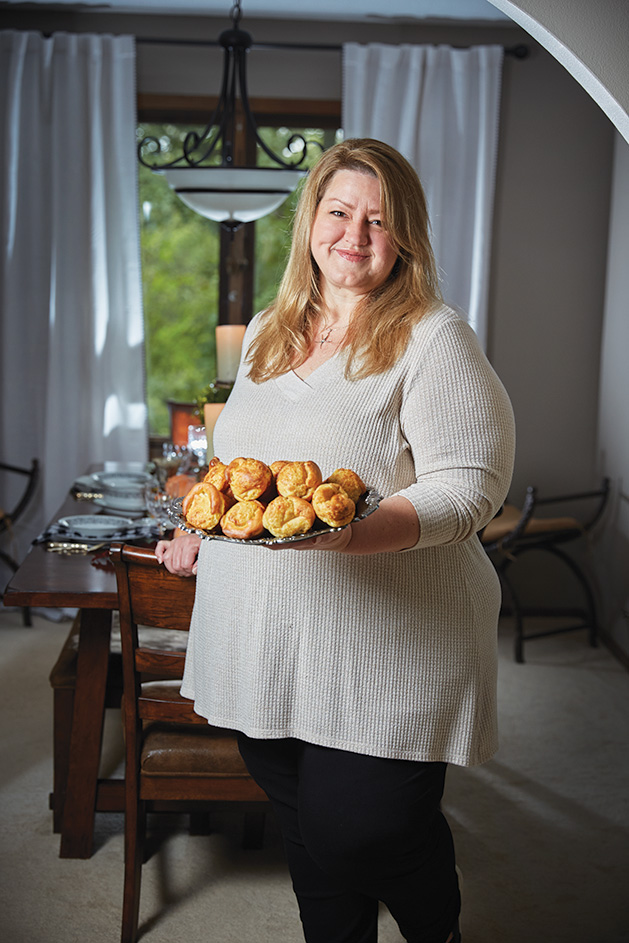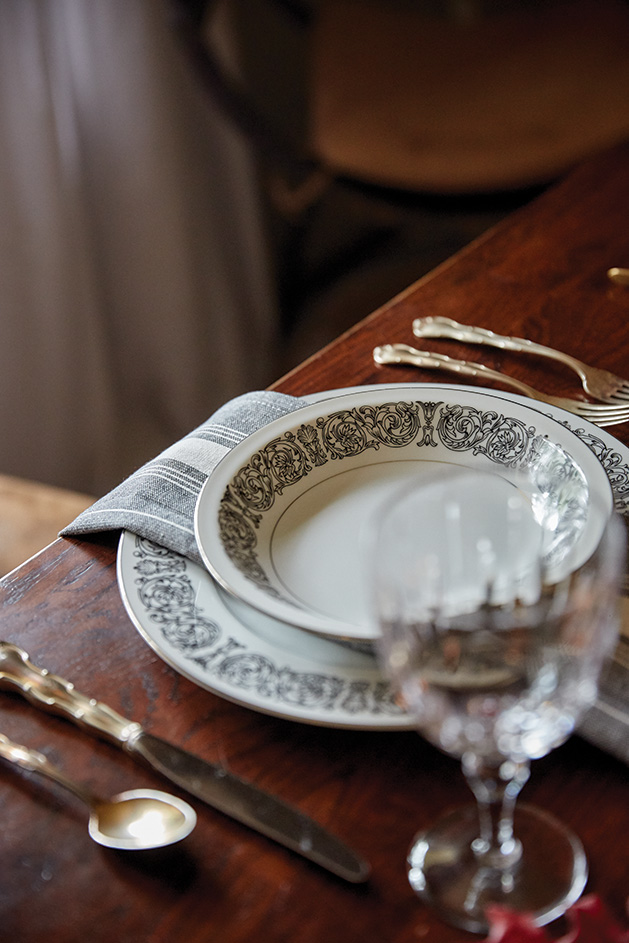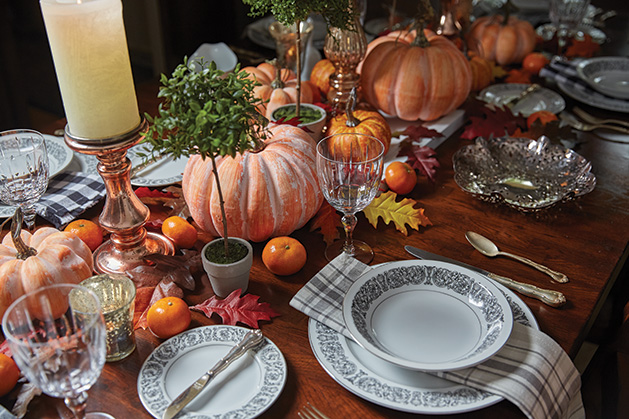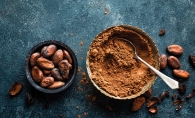
Our more than 10,000 lakes provide bounties of fresh fish—Bass, crappies, Northerns, sunnies (pumpkin seeds are a favorite!), Trout, Walleye and others have made the best shore lunches and dinners for generations of fish lovers. But, there’s more to the state than meets the angler’s eye.
From tip to tail, it’s about 400 miles, and therein Minnesota offers a wealth of prime public hunting land and some of the best game bird hunting in the nation. Game dinners are legendary, and if you’re lucky enough to be or know an avid hunter, you’ve been treated to prime proteins on your dining plate.
With one of the most-anticipated dinners of the year on the horizon, we decided to switch the narrative when it comes to Thanksgiving dinner.

When tradition (Thanksgiving) meets tradition (hunting), good things happen. We turned to Michele Phillips, a Minnetonka-based food blogger and recipe developer at baconfatte.com, who provided us with recipes for duck, pheasant and Cornish hens (not a game bird)—giving turkey a much needed respite from its in-the-spotlight Thanksgiving duties.

What are the “must knows” about cooking with these proteins?
They’re not like cooking chicken. Their juices often run red, and meat near the bones and joints often remains pinkish—but that doesn’t mean it’s undercooked. Seasoned wild fowl cooks recommend cooking to slightly lower temps, then covering and resting the birds to allow them to finish cooking while still retaining more moisture. The most important thing is how the birds are processed (and how quickly). Farmed birds are processed very efficiently and then promptly chilled or frozen to maintain freshness and flavor. In the field, however, it’s sometimes difficult to process and chill wild birds as quickly. Processing definitely impacts meat quality and flavor, and when people say they don’t care for wild fowl, it’s possible that they’ve previously experienced lower quality meat.
Let’s discuss cooking challenges.
Cooking times, methods and preparations differ considerably. There are many different resources out there, and everyone has different preferences and opinions. Really, the only way to get to know how to prepare wild birds well and to your liking is to practice … Every bird is different, and I’m still practicing, but a general rule of thumb is that the bird is done when the legs separate easily from the rest of the bird.
How do flavor profiles differ?
Pheasant and duck have “light” breast/wing meat and “dark” leg/thigh meat just like chicken, but in comparison, they have a more “mineraly” flavor to some … Every palate differs in opinion about flavors, so it’s difficult to describe, but it’s well worth the experience to try them all for yourself.
What are the weight guidelines for purchasing fowl?
Serving sizes always depend largely on appetites and everything else being served, so the following serving sizes offered by Pat Ebnet, owner of Wild Acres Processing, are general suggestions:
Grouse:
1½–2 lbs. each
Serving size = ½ bird
Quail (Bobwhite):
¾ lb. each
Serving size = 1 bird
Duck:
Wild mallards average 2-2½ lbs.
Farmed Pekins average 4 lbs.
Serving size = 1 breast or leg/thigh portion per person and up to ½ bird
Pheasant:
Wild roosters average 1½-2 lbs.
Farmed roosters average 2-2½ lbs. Hens average 1¾-2¼ lbs.
Serving size = 1 breast or leg/thigh portion per person, and up to ½ bird
Where did you source the proteins for these recipes?
I’m not a hunter, so I’m thankful that we have some really amazing sources in the Twin Cities for domestic/farmed birds.
- Whole Domestic Duck and Ground Duck: Wild Acres Processing in Pequot Lakes—the very same Wild Acres we see on restaurant menus throughout the Twin Cities. [Wild Acres is a wholesale seller only, but its products can be purchased retail in various Minneapolis markets.]
- Cornish Hens: Mackenthun’s Meats & Deli in St. Bonifacious
- Wild Pheasant: Hunted and impeccably processed by Wayzata’s Caroline Rather, an avid hunter, who is working with a team to create a wild game cookbook.
Do these fowl pair with the standard Thanksgiving side dish lineup?
Sure! Mashed potatoes, corn, squash, Brussels sprouts, carrots, green beans—they’re all wonderful with fowl. To that, I’ll add fresh herbs (thyme, sage and rosemary), earthy mushrooms, onions, garlic and fruits (citrus, apples, pears, grapes, stone fruits and pomegranates), which all pair incredibly well with wild fowl—especially when simply sautéed or roasted.
Many recipes suggest wrapping birds in bacon or prosciutto or drenching them in heavy sauces. That can be a mistake because you can easily lose the unique flavor of the fowl that way. Similarly, side dishes that are too heavy or robust might overpower them. Go for balance, and let these beautiful birds shine.
 When decorating her Thanksgiving table, Phillips goes for a maximalist approach with fall decor and meaninful dishware. “Every piece has a story,” she says.
When decorating her Thanksgiving table, Phillips goes for a maximalist approach with fall decor and meaninful dishware. “Every piece has a story,” she says.
What’s on your Thanksgiving dinner menu?
There will definitely be more “wild fare” on our table(s) this year that can be enjoyed separately if we must or together if we’re able. I’ll include one of the duck meatball appetizers and a lovely pheasant pâté recipe. Individual pheasant Wellingtons will also be included and, perhaps, duck gumbo, peasant pie or confit and something with lots of fresh herbs that has been grilled and smoked. We love long, leisurely mingling dinners that offer a little bit of everything.

Have you ever not served turkey on Thanksgiving?
We had a completely “wild” menu one year that featured a variety of wild game gifted from friends … We had venison Wellington, duck scallopini, pheasant wild rice soup, tossed salad and roasted veggies. It was a fun departure from the norm but still very much in keeping with the season of harvest and Thanksgiving.

Farmed v. Wild
Farmed/Domestic Fowl
This variety has softer, fattier meat with a milder flavor.
Wild Fowl
The meat can contain shot. Care should be taken to remove pellets during preparation. Double-check and remove any feathers or heavily damaged areas. This is leaner, sometimes “tougher” or “gamier” in flavor and can dry out more easily due to lower fat content.
Phillips whets our appetites with her delicious descriptions of inspired appetizer, entrée and side dish recipes. Bon appétit!

Ginger Sesame Duck Meatballs with Sautéed Baby Bok Choy
Makes about 20 meatballs. Serves 4–6
Meatballs:
- ¼ cup Golden raisins, finely chopped
- 1 tsp. Garlic, finely chopped
- 2–3 tsps. Fresh ginger, finely chopped
- 2 tsps. Shallot, finely chopped and more for garnish
- ½ tsp. Five spice powder
- ½ tsp. Red pepper flakes
- ½ tsp. Kosher salt
- ¼ tsp. Freshly ground black pepper
- 1 lb. Ground duck (with skin and duck fat)
- 1 Tbsp. Salted butter
Garnish:
- 1 tsp. each, Black and white sesame seeds, lightly toasted
- Shallot, thinly sliced (optional)
Sautéed Bok Choy:
- ½ pound (about 4 heads) Baby bok choy, washed and trimmed
- ¼ cup Prepared sesame ginger dressing (I used Salad Girl Toasted Sesame Ginger Vinaigrette.)
- 2 Tbsp. Shallot, thinly sliced
In a medium bowl, combine first eight ingredients. Add ground duck, and mix just until ingredients are incorporated. Roll into generous tablespoon-sized meatballs (approximately 20). Place meatballs on a plate, and refrigerate uncovered for about 30 minutes.
In a large fry pan, melt 1 Tbsp. butter. Add chilled meatballs, and brown lightly on all sides, turning frequently and cooking to an internal temperature of 155–160 degrees. Remove from pan, place on a clean plate, and cover immediately with foil to rest.
Pour duck fat through a fine strainer into a small bowl, and allow to cool at room temperature. Cover tightly, and refrigerate for future use. Scrape the pan lightly with a rubber spatula to remove any caramelized bits. Add ¼ cup dressing and chopped shallots, and sauté over medium heat for about a minute. Add cleaned bok choy, and sauté for three to five minutes, until it reaches desired tenderness.
To serve: Plate bok choy, and place cooked meatballs on top. Drizzle any remaining pan juices over meatballs. Garnish with thinly sliced fresh shallots (optional) and toasted sesame seeds. Serve warm.
Cook’s Note: Prepare meatballs up to a day in advance, and keep covered and refrigerated until ready to cook. Recipe can be doubled or more. Serve with rice for a light main dish.

Herbed Duck Meatballs with Cherry, Apple Red Wine Sauce and Toasted Couscous
Makes about 20 meatballs. Served 4 - 6
Meatballs:
- 1 Yellow onion, finely chopped, about 1 cup total, divided
- 2 Tbsp. Panko breadcrumbs
- 1 Tbsp. Water or wine
- Kosher salt and freshly ground black pepper
- 2 tsp. Fresh thyme, chopped
- 2 Tbsp. Dijon mustard
- 1 pound Ground duck (with skin and fat)
Sauce: (makes 2 cups)
- 10–12 ounce package Frozen cherries, thawed and chopped
- 1 small apple (such as Honey Crisp), cored and chopped, about 1 cup
- ½ cup Yellow onion, about 1/2 cup
- ½ cup Red wine (such as a Cabernet or Port)
- ¼ tsp. Salt
- 2 Tbsp. Honey, raw sugar or other sweetener of choice or more to taste
- 1 tsp. Fresh thyme, chopped
Couscous:
- 1 Tbsp. Olive oil
- 1 cup Pearl couscous
- 1¼ cup Water
- ¼ tsp. Salt, plus more to taste
- White wine, just a splash or two, optional, to finish couscous as needed
Garnish:
- Fresh cherries (optional)
- Sprigs of fresh thyme
Meatballs:
In a medium bowl, combine the first six ingredients. Add ground duck and mix just until incorporated. Roll into generous 1 Tbsp.-sized meatballs. Place on a plate and refrigerate for 30 minutes (up to 24 hours). In a large frypan over medium-high heat, add the meatballs (without crowding). Fry, turning often, until meatballs are nicely browned. Move cooked meatballs to a plate, and cover with foil to rest until ready to serve.
Sauce:
Combine all ingredients in a covered sauce pan. Bring to a simmer, stirring occasionally, then reduce heat and allow to simmer for 20–30 minutes or until liquids are incorporated. Taste, and season or sweeten as necessary. Cover and set side.
Couscous:
Add the oil to a small covered sauce pan over medium heat. When heated, add dry couscous, and toss to coat with oil. Toast lightly, stirring often, just until about half of the pearls are lightly toasted. Add the water, and stir well. Stir occasionally until water is absorbed. If needed, add a splash or two of white wine (or water). Stir well, and cover for two minutes. Repeat until couscous reaches desired tenderness.
To serve: Place equal amounts of couscous, sauce and meatballs in small dishes. Garnish and serve immediately. Alternatively, you can toss the meatballs in the sauce before serving (I like the cleaner, layered look.)
Maple Hot Honey Roasted Duck with Roasted Vegetables
Serves 4 – 6
Duck:
- 3–4 lbs. Duck, cleaned and thawed if frozen
- Kosher salt
- Freshly ground black or four-color peppercorns
- Granulated garlic
- 4 or more cups Water
Sauce:
- 1/3 cup Maple syrup
- 1/3 cup Hot honey
- 1/3 cup Butter
Vegetables and Garnish:
- 1 lbs. Sweet potatoes, ½-inch slices
- 1 lbs. Brussels sprouts, halved
- 4–6 Large spring onions, quartered
- 3–4 Tbsp. Olive oil
- Kosher salt and pepper to taste
- 1 lbs. Red seedless grapes, to garnish
- Fresh herbs, such as flat leaf parsley, to garnish
Duck:
Preheat the oven to 425°F. Prepare roasting pan with rack. Boil four cups of water (or enough to fill ½ inch in the bottom of your roasting pan).
Rinse duck inside and out with cold water. Place breast side up on the roasting pan rack. Gently pierce or score duck skin, especially the fattier areas, every inch or so. (Pierce the skin only; do not cut into the meat.) Carefully pour boiling water over duck to tighten skin.
Season the breast side of duck, and place in 425°F oven for 15 minutes. Remove pan from the oven, carefully turn the duck over, and season the back side. Place back in a 425°F oven for an additional 15 minutes. Lower the oven temperature to 350°F. Turn the duck breast side up, and roast for 15 minutes. Turn the duck two more times at 15-minute intervals. On the breast side, lightly brush with sauce, and return the duck to the oven for 15 minutes. Leaving the breast side up, brush again with sauce, and roast again for 15 minutes. Repeat the process of roasting until the duck reaches an internal temperature of 165°F. (Using an instant read thermometer, check the innermost part of the thigh and wing and the thickest part of the breast, midway to bones). The legs should pull away easily from the body when done.
Cook’s Note: The roasting process I used involves turning the duck several times to ensure all sides heat and cook evenly and required about two full hours of roasting time. Prepare the vegetables while the duck roasts.
Sauce:
Add syrup, honey and butter in a small sauce pan over low heat. Stir occasionally to combine, but do not allow to boil. Spoon ¼ cup of sauce into a small bowl, and reserve for basting; serve the rest at the table. Cover, and set aside (or refrigerate if making a day ahead).
Vegetables:
In a large covered skillet, add the oil and prepared vegetables, and toss. Pan roast, stirring occasionally, for about 30 minutes or until tender. Alternatively, toss vegetables with oil, and roast on a foil-lined baking sheet in the oven on a rack separate from the duck. Plate the vegetables, add the fresh grapes and herbs, and carve desired duck portions.
Cook’s Note: Grapes can also be roasted, but they provide a lovely pop of flavor served fresh along with the roasted vegetables.

Grilled Cherry-Smoked Cornish Hens (or small game birds) with Vegetables and Smoked Gouda Cream Sauce
Serves 4
Cornish Hens:
- 2, 1½ lbs. Cornish hens, halved
- Kosher salt, freshly-ground black or four-color peppercorns, and granulated garlic, to taste
Vegetables:
- ½ Red onion, sliced
- 1 Yellow zucchini, sliced diagonally
- 1 Green zucchini, sliced diagonally
- 2 Sweet peppers (red and orange), sliced
- 1 lbs. Creamer potatoes, scrubbed
- 4 Tbsp. Olive oil, divided
- Water, as needed, a tablespoon at a time
Smoked Gouda Cream Sauce:
- 2 Tbsp. Salted butter
- 2 Tbsp. All-purpose flour
- 1½ cups Whole milk, at room temp
- 1½ cups Smoked Gouda cheese, dark rind trimmed and freshly shredded
- 1 tsp. Mustard powder
- ¼ tsp. Kosher salt and more to taste
Cornish Hens:
Season bird halves, and prepare grill. We use a Big Green Egg (large). Add 4–5 chunks of cherry wood, light and place diverter. The top vent should be cracked open to allow oval-shaped openings, and open the bottom vent about a ¼ inch to allow proper ventilation. Cook/smoke the birds at around 275–300 degrees smoke temperature for 1–1½ hours or until birds are cooked and smoked to your liking. Safe internal temperature is around 165 degrees F.
Vegetables:
Prepare two fry pans with olive oil and a little water. Place the potatoes in one pan over medium heat, and cover, turning as needed. Place the onions, zucchini and peppers together in a second pan with water and oil, and cover. Toss as needed until tender.
Cook’s Note: You can also sauté the onions, zucchini and peppers separately if you prefer.
Smoked Gouda Cream Sauce:
In a lidded sauce pan, add the butter, and melt over medium heat. Add the flour, and whisk to incorporate. Continue whisking for about two minutes to cook the flour. Do not allow mixture to brown. Add the milk, and whisk briskly to incorporate. Continue whisking off and on for about three minutes or until mixture thickens. Increasing heat slightly will help with thickening, but do not allow mixture to bubble. When thickened, turn heat off, and add shredded Gouda, mustard powder and salt (to taste). Serve warm.
Cook’s Note: This thick, rich sauce can be made ahead. Cover, and refrigerate up to two days. Reheat slowly in a sauce pan over low heat. Whisk to soften the chilled sauce, and add a teaspoon of milk (or more, if needed), and whisk until warmed and silky.
To serve, plate vegetables and Cornish hen half, then spoon warm sauce over the top.
Pheasant Wellington with Duxelles and Fromage, Served with Pan-Roasted Heirloom Carrots
Serves 2
Pheasant:
- 2 Boneless pheasant breasts (about 6 oz. each)
- 2 Tbsp. Olive oil
- Salt and pepper to taste
- 2 oz. Boursin Garlic and Fine Herb Cheese
- 1 sheet Puff pastry, lightly rolled and cut in half and trimmed to 7- by 7-inch pieces
- 1 Egg, beaten, for brushing puff pastry
Duxelles:
- 1–2 Tbsp. Olive oil (as needed)
- 2 Tbsp. Shallot, finely chopped
- 4 oz. Baby portobellos, finely chopped
- 1 Tbsp. Sherry
- 2 Tbsp. Heavy cream
- 1½ tsp. Fresh herbs or choice, finely chopped
- A few grinds of Fresh ground pepper
- A pinch of Salt, if needed
Carrots:
- 6-8 Multi-colored heirloom carrots, peeled, greens trimmed
- 1/3 cup Water
- A pinch of Salt
In a large fry pan, add the oil, and heat over medium heat. Lightly season pheasant breasts with salt and pepper, and sear for about a minute each side. Remove breasts from pan, and place on a plate. Cover, and set aside.
To the hot pan, add 1–2 Tbsp. olive oil (as needed). Sauté shallots until they are translucent. Add the mushrooms, and sauté until they begin to release their juices. Add cream, sherry and herbs, and stir well to combine. Reduce until mixture becomes thick and spreadable, and turn off the heat.
Preheat the oven to 425°F. Line a baking pan with parchment, and place the rolled half sheets of puff pastry on top of the parchment. Spoon half of the duxelles mixture into the center of each piece of puff pastry. Spread each of the pheasant breasts with an ounce of Boursin, and place the breasts cheese side down on top of the duxelles. Neatly fold the puff pastry up over each breast, making sure the pastry thickness is fairly uniform and edges are sealed. Trim any excess pastry. Carefully, turn the pastry-covered breasts over, so pastry seams are on the bottom. Brush pastry tops and sides with beaten egg. Add any designs or cut-outs from trimmed pastry. Bake at 425°F for 10–12 minutes or until golden brown with an internal temperature of 165°F. Remove from oven, and rest for 10 minutes before serving.
Carrots:
In a small covered sauce pan (just big enough for the carrots) over low–medium heat, add water, salt and carrots and cover lightly. Simmer carrots lightly until tender, turning occasionally to cook evenly. Serve warm with the Wellington.
BaconFatte
Facebook: Bacon Fatte
Instagram: @baconfatte
Twitter: @baconfatte









